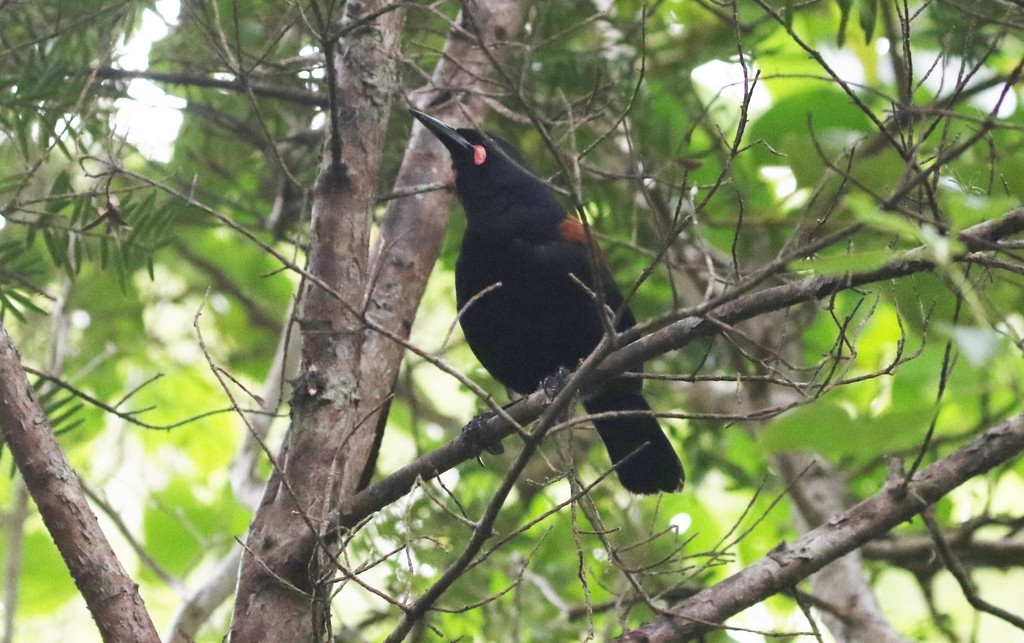South Island Saddleback
A species of Saddlebacks, Also known as Jackbird Scientific name : Philesturnus carunculatus Genus : Saddlebacks
South Island Saddleback, A species of Saddlebacks
Also known as:
Jackbird
Botanical name: Philesturnus carunculatus
Genus: Saddlebacks
Content
Description General Info
 Photo By silversea_starsong , used under CC-BY-NC-4.0 /Cropped and compressed from original
Photo By silversea_starsong , used under CC-BY-NC-4.0 /Cropped and compressed from original Description
The South Island saddleback or tīeke (Philesturnus carunculatus) is a forest bird in the New Zealand wattlebird family which is endemic to the South Island of New Zealand. Both the North Island saddleback and this species were formerly considered conspecific. The Department of Conservation currently has the South Island saddleback listed as At Risk--Declining. 
Size
25 cm
Nest Placement
Cavity
Feeding Habits
South Island Saddleback predominantly feeds on invertebrates, berries, and occasionally on honeydew, nectar, and fruits. It forages mostly on the ground and uses a gleaning technique, alongside a unique 'gaping' method to pry bark. It's skilled at picking insects off leaves and licks honeydew like a parrot, sometimes using feet for support.
Habitat
South Island Saddleback naturally resides in dense evergreen coastal forests and mixed lowland broadleaf forests, thriving at elevations up to 152 meters. Conservation translocations have expanded their habitat to similar offshore island environments, where they often select coastal scrub and second-growth areas for breeding. These settings replicate the key aspects of their historical habitat typified by Olearia tree daisies and southern rata.
Dite type
Omnivorous
General Info
Feeding Habits
Bird food type
Distribution Area
During the early 19th century, South Island saddlebacks were widely distributed throughout the South and Stewart Islands. However, by the end of the century, the species was in decline and nearing extinction due to introduced predators. By 1905, the saddlebacks were confined to the South Cape Islands, off the coast of Stewart Island. In 1962, ship rats were introduced to Big South Cape Island, causing the extinction of the greater short-tailed bat, Stewart Island snipe and the Stead's bush wren. In early 1964, 36 individuals on Big South Cape Island were translocated by the New Zealand Wildlife Service to pest-free islands. Big Island received 21 individuals, whilst Kaimohu Island received 15. Further translocations and predator removal allowed the population to recover, with the current population estimated to be around 2000. 
Species Status
A threatened species recovery plan was established by the Department of Conservation in 1994, with the aims of maintaining wild populations, adopting quarantine procedures, and removing predators from islands potentially suitable for translocating members of the species. 
Scientific Classification
Phylum
Chordates Class
Birds Order
Perching birds Family
Wattled crows Genus
Saddlebacks Species
South Island Saddleback